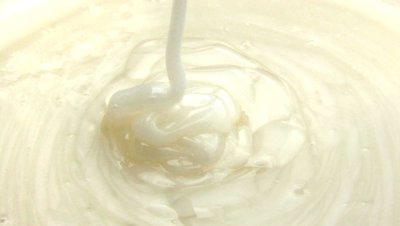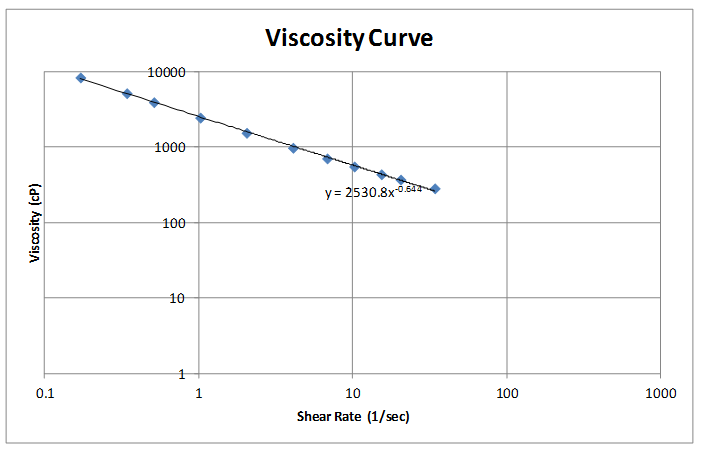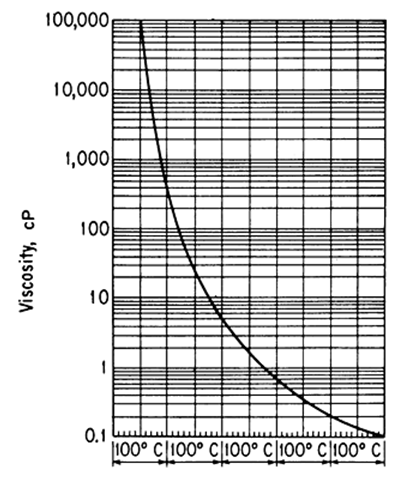Chemical and Process Engineering Resources

Viscosity Measurements
Pseudoplastic compounds follow a power curve, with viscosity decreasing with shear rate. Viscosity measurements were performed with a Brookfield Viscometer, Model LVDV-II+. Using the #31 spindle and Sample Adapter 13R cup, shear rate is determined by multiplying the rotational speed by 0.34iii. This gives the following raw data for the placebo product made for the tests:
|
RPM |
Viscosity (cP) |
Torque (%) |
Shear Rate, sec-1 |
|
0.5 |
8338 |
13.9 |
0.17 |
|
1.0 |
5159 |
17.2 |
0.34 |
|
1.5 |
3919 |
19.6 |
0.51 |
|
3.0 |
2449 |
24.6 |
1.02 |
|
6.0 |
1540 |
30.8 |
2.04 |
|
12.0 |
977.3 |
39.1 |
4.08 |
|
20.0 |
706.3 |
47.1 |
6.8 |
|
30.0 |
551.9 |
55.2 |
10.2 |
|
45.0 |
435.2 |
65.3 |
15.3 |
|
60.0 |
370.4 |
74.1 |
20.4 |
|
100.0 |
283.7 |
94.6 |
34 |
|
150.0 |
EEEE |
EEEE |
|
Measurements made at 25°C
Here are the data charted in Excel with the trend line and trend line equation superimposed:
 |
| Figure 1: Graph of Viscosity Data with Trend Line |
The power law equation for apparent viscosity is:
| μa = K γn-1 | Eq. (6) |
K = flow consistency index, Pa-sn = flow behavior index, dimensionless
Viscosity is in units Pa-s. Since our data is in cP (=mPa-s), the values of K and n are 2.53 and 0.356.
The viscometer’s measurement range is limited, but extrapolation is acceptable with decreased accuracy.
Using the trend line equation, the viscosity at any shear rate is estimated. But this is for a temperature of 25°C. Since data at only one temperature is given, the Lewis and Squires temperature correlation is used to estimate the viscosity at the actual flowing condition.
 |
| Figure 2: Lewis and Squires Temperature Correlation |
The equation for this chart isiv:
 |
Eq. (7) |

 FB
FB



6 Comments
Very good read. I currently am working with a client in the ~400 to ~600 cP viscosity range. This analysis will be very helpful.
Mark
Please give me the Viscosity calculation in Excel sheet with various Ointment and other Viscous Material
Thank you, can you also include the schmatic diagram of the set up.
Is this excellent article available as a pdf download?
Sent it to you via PM.
Very interesting article. May I use this as a case study for teaching my fluid dynamics class?